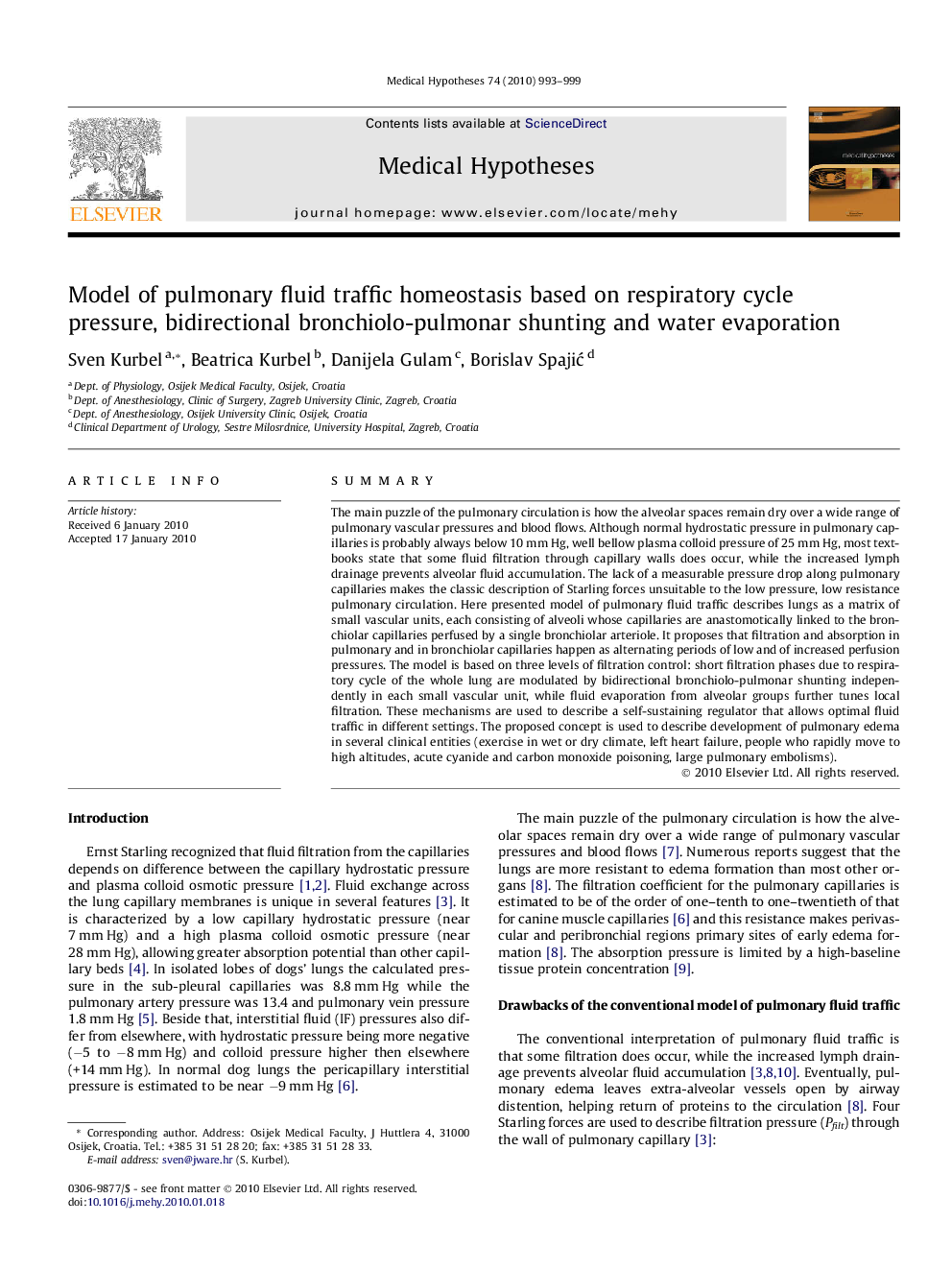| کد مقاله | کد نشریه | سال انتشار | مقاله انگلیسی | نسخه تمام متن |
|---|---|---|---|---|
| 2489778 | 1115053 | 2010 | 7 صفحه PDF | دانلود رایگان |

SummaryThe main puzzle of the pulmonary circulation is how the alveolar spaces remain dry over a wide range of pulmonary vascular pressures and blood flows. Although normal hydrostatic pressure in pulmonary capillaries is probably always below 10 mm Hg, well bellow plasma colloid pressure of 25 mm Hg, most textbooks state that some fluid filtration through capillary walls does occur, while the increased lymph drainage prevents alveolar fluid accumulation. The lack of a measurable pressure drop along pulmonary capillaries makes the classic description of Starling forces unsuitable to the low pressure, low resistance pulmonary circulation. Here presented model of pulmonary fluid traffic describes lungs as a matrix of small vascular units, each consisting of alveoli whose capillaries are anastomotically linked to the bronchiolar capillaries perfused by a single bronchiolar arteriole. It proposes that filtration and absorption in pulmonary and in bronchiolar capillaries happen as alternating periods of low and of increased perfusion pressures. The model is based on three levels of filtration control: short filtration phases due to respiratory cycle of the whole lung are modulated by bidirectional bronchiolo-pulmonar shunting independently in each small vascular unit, while fluid evaporation from alveolar groups further tunes local filtration. These mechanisms are used to describe a self-sustaining regulator that allows optimal fluid traffic in different settings. The proposed concept is used to describe development of pulmonary edema in several clinical entities (exercise in wet or dry climate, left heart failure, people who rapidly move to high altitudes, acute cyanide and carbon monoxide poisoning, large pulmonary embolisms).
Journal: Medical Hypotheses - Volume 74, Issue 6, June 2010, Pages 993–999